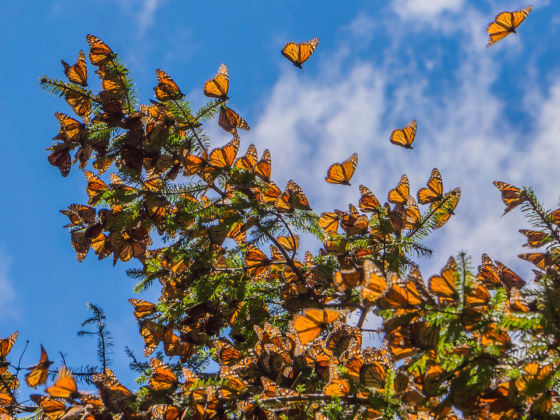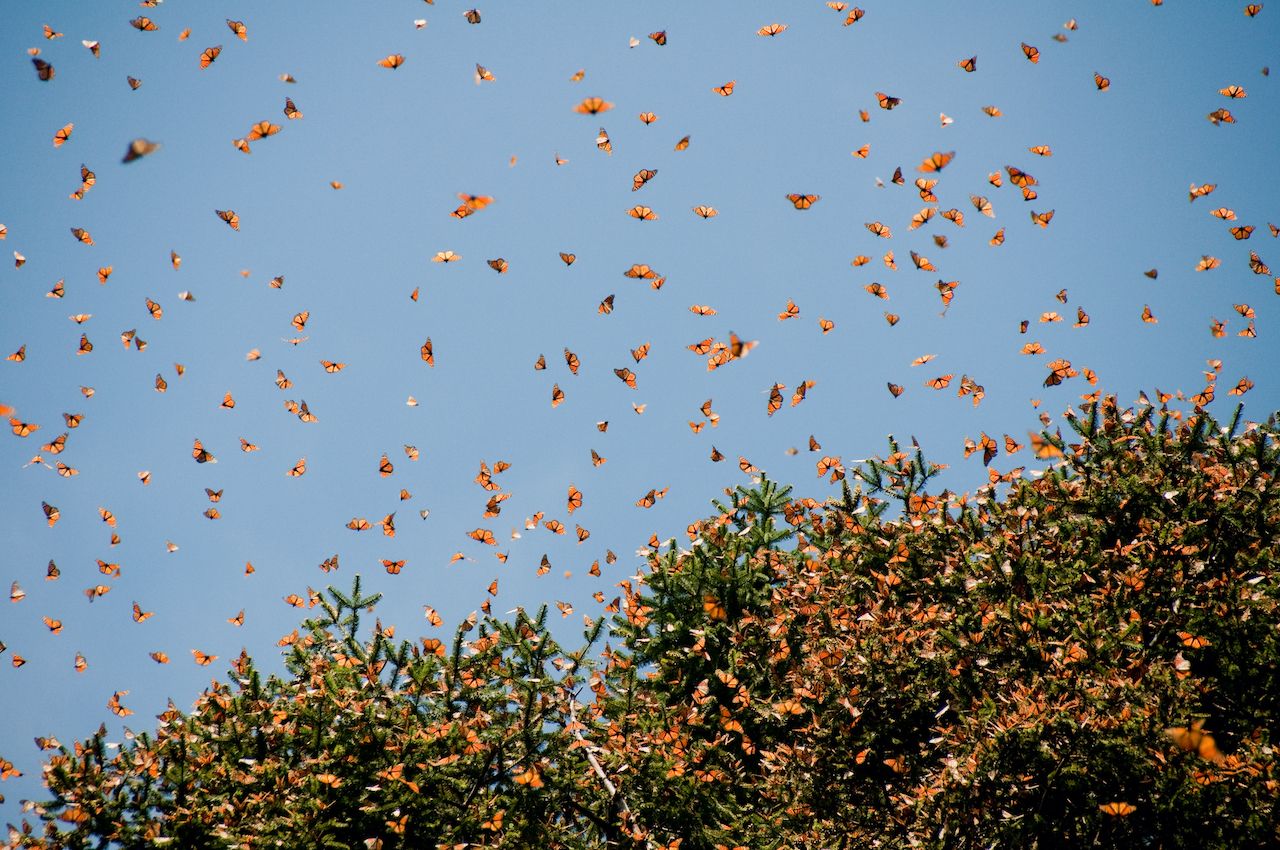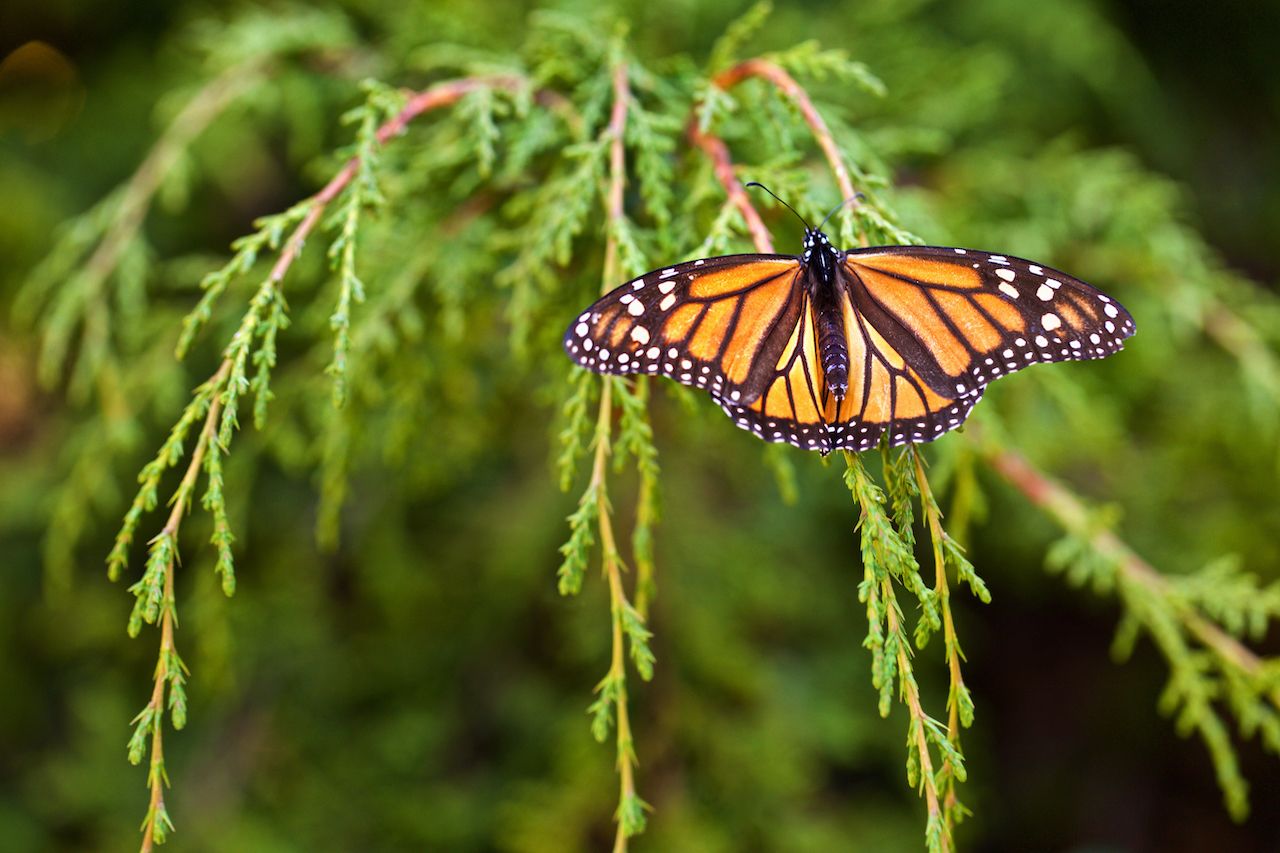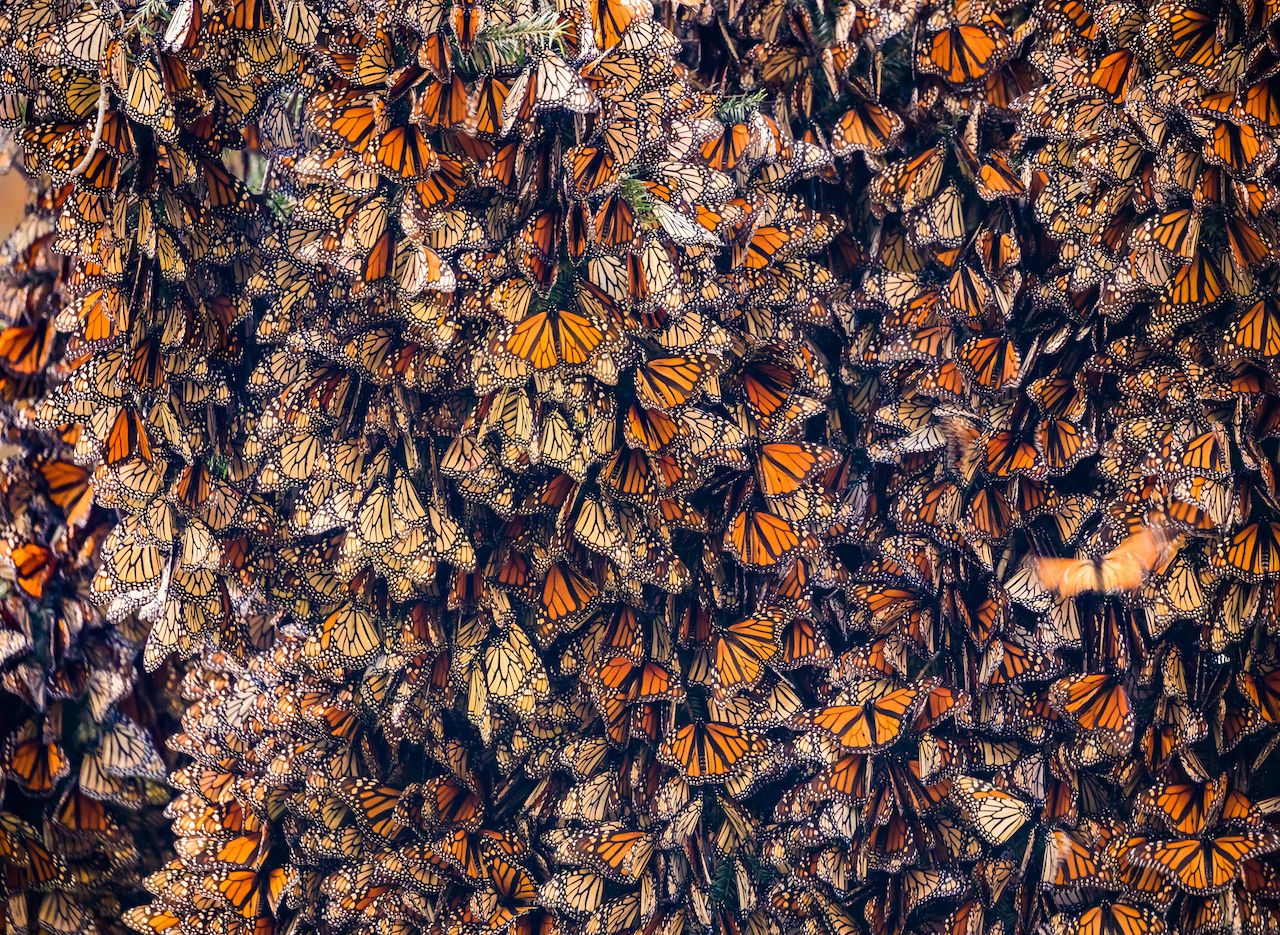Each year, with the arrival of winter, monarch butterflies make the long and difficult journey from Canada and the US south to Mexico to hibernate. Seeing the butterflies up close is so spectacular — and their migration so historically important — that the Monarch Butterfly Biosphere Reserve, located in the state of Michoacán, was declared a UNESCO World Heritage site in 2008. The first of the butterflies arrive in early November, and there are many different sanctuaries you can visit to see them up close in the forests of oyamel trees.


Where to See Thousands of Migrating Monarch Butterflies in Mexico This Winter
The mystery and cultural significance behind the monarch butterfly migration

Photo: Noradoa/Shutterstock
The origin of the monarch butterfly migration from Canada to Mexico each year is shrouded in mystery — monarchs are the only butterflies known to migrate both directions each year. Scientists still aren’t quite sure how monarchs are able to find their way to their annual hibernation spot in Mexico each year.
What they do know is that for thousands of years, the Purépecha people have recorded the monarch butterflies’ arrival in the same area of Mexico, at the same time each year. Culturally, the monarch butterflies’ arrival holds a lot of significance. The monarchs start arriving on November first, which is the beginning of the Day of the Dead celebrations in the country. As such, their arrival is ideally timed to honor deceased family members and loved ones. Many believe the monarchs arrival into the Sierra Madre mountains are the souls of their deceased ancestors returning to visit their living relatives.
When and where to see the monarch butterflies in Mexico

Photo: Natalia Gurieva/Shutterstock
Even though the monarchs start arriving at the beginning of November, many butterfly sanctuaries don’t actually open their doors to the public until the second or third week of the month. That way, when visitors arrive, they can expect to see a good amount of butterflies.
The monarch butterflies spend their winters in the Sierra Madre mountains in the states of Mexico and Michoacán, west of Mexico City. Come late March, the butterflies return north, following internal instinct along with external clues such as weather patterns and the position of the sun. To see the butterflies between November and March, check out one or several of the many sanctuaries open to visitors.
1. Piedra Herradura Sanctuary
The Piedra Herradura Sanctuary is located in the state of Mexico, and it is the easiest one to get to if you are coming from Mexico City (about a two-hour drive). A guide will take you up the mountain to see the butterflies either on foot or on horseback depending on what you choose. It is quite a steep incline, so come prepared for a workout to get up to the top.
Entrance fee for a two-hour visit to Piedra Herradura $3.70 for adults. You can also choose to ride a horse up the steep incline of the mountains for $10.50.
2. Cerro Pelon Sanctuary
There are two separate entrances at the Cerro Pelon Sanctuary. One is in Macheros, and the other is in El Chapulin. Cerro Pelon is a three-hour drive from Mexico City and located in the state of Mexico. It is known for being more rugged and less crowded than other sanctuaries. Choose to walk or ride up via horseback to see the butterflies at Cerro Pelon, where entrance fees start at around $2 per person.
If you’d like to spend the night before or after visiting Cerro Pelon, head to the nearby JM’s butterfly B&B. The staff at JM’s also leads tours up to Cerro Pelon, but the fees are a little higher due to transportation costs.
3. El Rosario Sanctuary
El Rosario Butterfly Sanctuary is the most popular place to see the monarchs in Michoacán. The Sanctuary is located near the beautiful pueblo magico (“magic town”) of Angangueo. El Rosario is about a four-hour drive from Mexico City. The hike up the mountain to see the monarchs is steep at El Rosario and takes an hour to trek. There is also the option to see the butterflies on horseback.
There are guides, horses, food and drinks, as well as a spot to buy handicrafts at the base of El Rosario. Entrance fees at El Rosario butterfly Sanctuary start at $2.60.
4. Sierra Chincua Sanctuary
The Sierra Chincua Butterfly Sanctuary is located in Michoacán and is also near Angangueo. Sierra Chincua is about a three-and-a-half-hour drive from Mexico City. At Sierra Chincua, you will be led by a guide to see the monarch butterfly migration either on foot or by horseback. It can take anywhere from 45 minutes to an hour to arrive at the butterfly viewing area.
Aside from hiking and horseback riding to see the butterflies, there are also nearby zip lines, a climbing wall, and suspension bridges to check out. Entrance fees at Sierra Chincua start at $2.40.
How to behave when viewing the monarchs

Photo: SlavoMrug/Shutterstock
While seeing the monarch butterflies up close is a wonderful activity to partake in, it is important to remember that the monarch butterfly population has been rapidly declining since the 1980s. In fact, it was estimated that in the 1980s there were three to 10 million monarch butterflies in North America. Scientists now believe that there are only 30,000 left.
In order to take care of the species, there are rules that visitors must follow when visiting the butterfly sanctuaries. First and foremost is to act as though you’re in a library — avoid loud conversations and generally keep quiet. It is also important to not cross into any out-of-bounds areas and to always follow the instructions of your guide. Most sanctuary websites also indicate that smoking is prohibited.
What to expect during your visit to a butterfly sanctuary in Mexico

Photo: Isabelle OHara/Shutterstock
The first thing to be prepared for at any of these sanctuaries is a steep hike or horseback ride into the mountains to see the butterflies on your visit. Make sure you bring appropriate clothing, sunscreen, and lots of water. And again, remember to keep quiet when you get close to the butterflies and follow all the instructions from your guide.
The best part is the sheer amount of butterflies you will see — thousands of monarchs huddle together on the trees to keep warm. There are so many that the trees will be transformed into fluttering orange giants. You’ll also see thousands of butterflies flying from tree to tree overhead in a sea of orange and black wings.